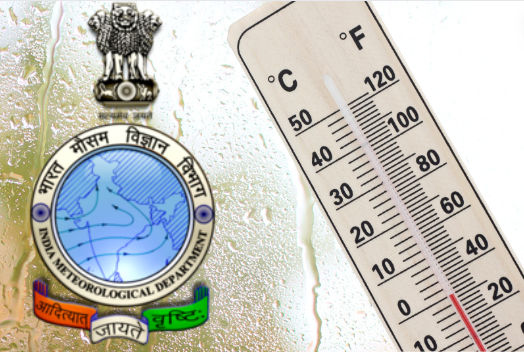IMD issues Yellow and Orange Alerts in Different Parts of Country
The India Meteorological Department (IMD) has issued an orange alert for a heatwave in states including Telangana, West Bengal, Odisha, Andhra Pradesh, Tamil Nadu, Karnataka, Kerala, Maharashtra, and Goa. The heatwave is expected to last from April 16 to April 17.
Additionally, IMD has predicted a second heatwave spell in April for Odisha, West Bengal, Andhra Pradesh, with heatwave conditions in isolated pockets of these states from April 16-20.
In contrast, IMD has also forecasted a fresh spell of rainfall, thunderstorms, lightning, and gusty winds in northwestern states such as Jammu and Kashmir, Himachal Pradesh, and Uttarakhand from April 18 to April 21.
Regions like Delhi, Punjab, Haryana, Chandigarh, and Delhi are likely to receive rainfall with thunderstorm and lightning from April 18-20. Further, the IMD has predicted isolated light to moderate rainfall/snowfall with thunderstorm and lightning in Jammu-Kashmir, Himachal Pradesh, and Uttarakhand due to a Western Disturbance. Overall, several states are expected to experience varying weather conditions in the next five days.
About Different Colour Alerts by IMD
IMD uses a color-coded weather warning system to alert the public about the severity and impact of various weather phenomena. The colour alerts issued by the IMD are as follows:
Green Alert (No warning):
- No weather warnings are expected in the near future.
- No action needs to be taken by the general public or disaster management authorities.
Yellow Alert (Be updated):
- Severe weather is possible over the next few days.
- The public should stay informed about the latest weather updates and warnings.
- Disaster management authorities should plan and prepare for any potential impact.
Orange Alert (Be prepared):
- The weather condition has the capacity to significantly impact people in the affected areas.
- This alert indicates a higher level of danger compared to the Yellow Alert.
- The public should prepare for rough weather and stay away from vulnerable areas.
- Disaster management authorities should be ready to handle any emergencies.
Red Alert (Take action):
- Extremely severe weather conditions are expected.
- This alert indicates the highest level of threat and requires immediate action.
- The public should take all necessary precautions and follow the instructions of local authorities.
- Disaster management authorities should be in full readiness to respond to the situation and minimize the impact on life and property.
These colour alerts are issued for various weather events such as heavy rainfall, thunderstorms, heatwaves, cold waves, cyclones, and more.
The IMD disseminates these alerts through various channels, including media, government agencies, and their official website, to ensure that the public and relevant authorities are well-informed and can take appropriate actions to mitigate the impact of severe weather conditions.
About IMD
Indian Meteorological Department is the national meteorological organization of India. It is responsible for providing weather forecasts and warnings, as well as conducting meteorological research and studies. IMD plays a crucial role in issuing cyclone alerts, monsoon predictions, and drought monitoring. The organization was established in 1875 and has a network of observatories across the country to monitor weather patterns. IMD also collaborates with international meteorological agencies to improve forecasting accuracy and disaster management.
Month: Current Affairs - April, 2024
Category: Environment Current Affairs


